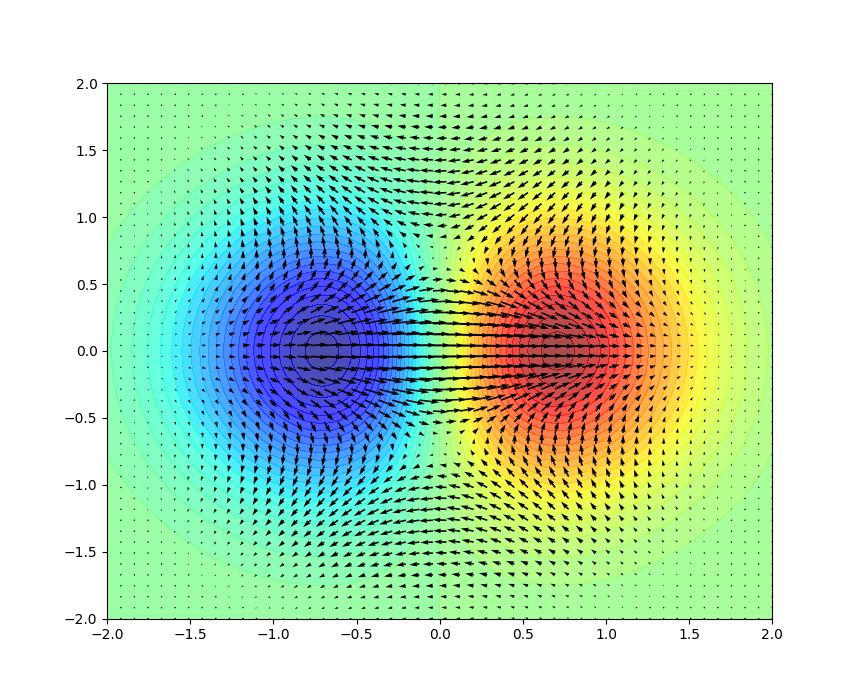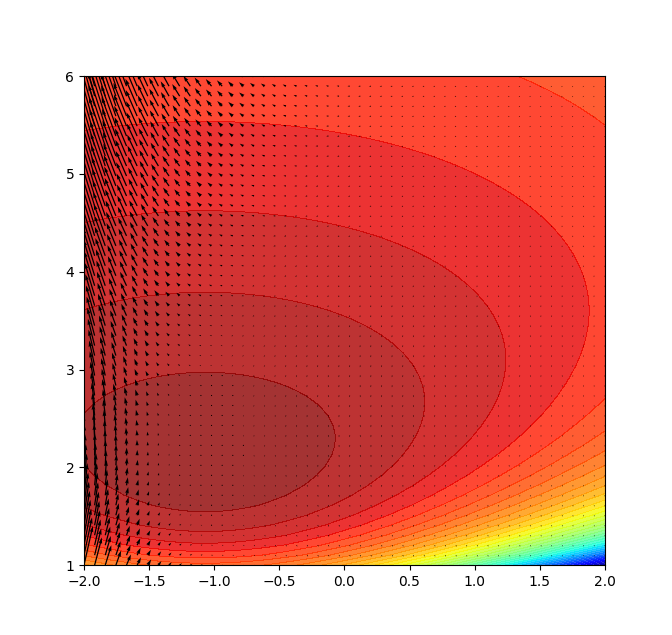Autolik aims at providing interface of automatic differentiation for likelihood maximization routine. It not only supports various distributions probability density function and their log-likelihood functions, but also the gradient of log-likelihood functions. For example, Normal, Gamma, Laplace, Pareto, T, Generalized Gamma, Generalized Pareto, ,Inverse Gaussian, Inverted Gamma, Lomax, Minimax, Rayleigh, Weibull and so on. It also supports self-defined python functions and provides fast automatic differentiation api on it.
Example use:
>>> from autolik import Dual # for self-defined functions use
>>> import autolik
>>> import matplotlib.pyplot as plt
>>> from matplotlib.pyplot import cm
>>> import numpy as np
>>> def z(x,y): # self-defined function
... if isinstance(x,Dual) or isinstance(y,Dual): # autolik.Dual computation
... return x * (-x**2 - y**2).exp()
... else:
... return x * np.exp(-x**2 - y**2)
>>> z_grad = autolik.grad(z) # gradient function
>>> x = np.linspace(-2,2,100)
>>> y = np.linspace(-2,2,100)
>>> X,Y = np.meshgrid(x,y)
>>> Z = np.array([[z(i,j) for i in x] for j in y])
>>> vx = np.linspace(-2,2,50)
>>> vy = np.linspace(-2,2,50)
>>> vX,vY = np.meshgrid(vx,vy)
>>> Z_grad = np.array([z_grad([i,j]) for i in vx for j in vy]) # gradient vectors
>>> ax = plt.axes()
>>> ax.contourf(X,Y,Z,levels=50, cmap=cm.jet, alpha = 0.7)
>>> ax.quiver(vX,vY,Z_grad[:,0],Z_grad[:,1])
>>> plt.show()List of supported build-in log-likelihhood api for gradient computation
Example:
>>> import autolik
>>> import numpy as np
>>> y = np.random.normal(-1,2,100)
>>> def loglik_normal(mu,sigma): # prepare the logliklihood function
... return autolik.ll.normal(y, mu, sigma)
>>> g = autolik.grad(loglik_normal) # generate the gradient for the logliklihood function
>>> import matplotlib.pyplot as plt
>>> from matplotlib.pyplot import cm
>>> mu = np.linspace(-2,2,50)
>>> sig = np.linspace(1,6,50)
>>> Mu,Sigma = np.meshgrid(mu,sig)
>>> loglik = np.array([[loglik_normal(i,j) for i in mu] for j in sig])
>>> loglik_grad = np.array([g([i,j]) for i in mu for j in sig])
>>> ax = plt.axes()
>>> ax.contourf(Mu,Sigma,loglik, levels=50, cmap=cm.jet, alpha = 0.8) # plot the contour of log-likelihood function
>>> ax.quiver(Mu,Sigma,loglik_grad[:,0],loglik_grad[:,1]) # plot the gradient vectors of log-likelihood function
>>> plt.show()List of supported operators and functions for gradient computation
Autolik supports the basic operators (e.g. +, -, *, **, / ...) and special functions (e.g. sin, cos, exp, log, gamma, beta ...)
Simply run the following code in terminal or prompt:
pip install autolikAutolik is written by Langyan Zang. The package is currently in the very beginning stage, any kind of contribution is welcome. Autolik is currently developed by Langyan solely, the understanding of the slow development would be appreciated. For advices, please do not hesitate to write an email langyan.zang@uzh.ch and instruct me ^.^.

